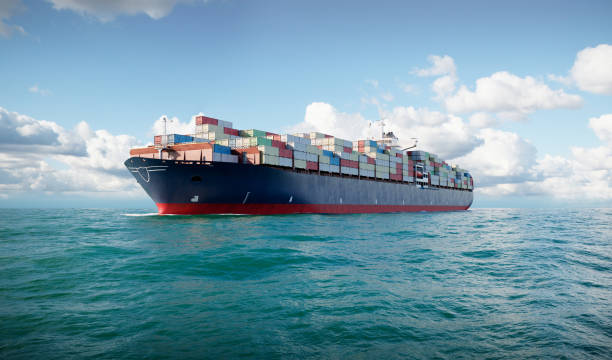Imports are commodities and services purchased from another country by citizens, businesses, and governments.
It makes no difference what the imports are or how they are delivered.
They can be sent, emailed, or even carried on a plane as personal luggage.
Imports are goods made in another country and sold to people in the United States.
Tourism-related goods and services are also imported.
When you travel outside of the nation, you are bringing back whatever souvenirs you purchased.
Imports and the Trade Deficit
Consumers are accustomed to seeing products from all over the world at their local grocery stores and retail outlets in today’s global economy.
Consumers have additional options with these imported goods from other countries.
Imports also assist consumers in managing their tight household budgets because they are typically manufactured at a lower cost than domestically produced equivalents.
When a country’s imports outnumber its exports (items delivered from that country to a foreign destination), the country’s balance of trade is distorted and its currency devalued.
Because the value of a currency is one of the most important indicators of a country’s economic performance and gross domestic product (GDP), devaluation can significantly influence inhabitants’ daily lives.
A country’s ability to maintain an optimum balance of imports and exports is critical.
A country’s importing and exporting activity has the potential to influence its GDP, exchange rate, inflation, and interest rates.
Read: What Makes A Country Wealthy?

Effect of Imports on Gross Domestic Product
A country’s gross domestic product (GDP) is a broad measure of its overall economic activity.
Innovative Tech Solutions, Tailored for You
Our leading tech firm crafts custom software, web & mobile apps, designed with your unique needs in mind. Elevate your business with cutting-edge solutions no one else can offer.
Start NowThe expenditures approach to computing GDP includes imports and exports as significant components. The GDP formula is as follows:
GDP=C+I+G+(X?M)
where:
C=Consumer spending on goods and services
I=Investment spending on business capital goods
G=Government spending on public goods and services
X=Exports
M=Imports?
Exports minus imports (X – M) equals net exports in this equation.
The net exports figure is positive when exports surpass imports.
This signifies that a country’s trade balance is positive. The net exports figure is negative when exports are less than imports.
This implies a trade deficit in the country.
Trade Surplus
A country’s economic growth is aided by a trade surplus.
More exports indicate a high level of output from a country’s factories and industrial facilities, as well as a larger number of workers employed to keep these firms running.
When a corporation exports many commodities, it also brings money into the country, stimulating consumer spending and contributing to economic growth.
When a country imports things, it signifies a financial outflow from that country.
Importers are local businesses that make payments to exporters in other countries.
Imports at a high level reflect strong domestic demand and a developing economy.
If these imports are primarily productive assets, such as machinery and equipment, the situation is even better for a country.
This is because productive assets boost the economy’s production over time.
A thriving economy is one in which both exports and imports are increasing.
This signifies economic strength and a long-term trade surplus or deficit.
If exports are increasing but imports are falling, it could mean that foreign economies are doing better than the home economy.
In contrast, if exports drop dramatically but imports rise, it may signal that the home economy is doing better than the global economy.
Read: What is Asset Allocation and How to Apply It
Effect of Imports on Exchange Rates
Because there is a perpetual feedback loop between international trade and how a country’s currency is valued, the relationship between a country’s imports and exports and its exchange rate is complicated.
The exchange rate influences the trade surplus or deficit, which influences the exchange rate in turn, and so on.
In general, however, a weaker home currency boosts exports while raising import prices.
A strong native currency, on the other hand, stifles exports while lowering import costs.
Take, for example, a $10 electrical component that will be sent to Nigeria.
Seamless API Connectivity for Next-Level Integration
Unlock limitless possibilities by connecting your systems with a custom API built to perform flawlessly. Stand apart with our solutions that others simply can’t offer.
Get StartedAssume the Naira to US dollar conversion rate is 500.
For now, the $10 electronic component would cost the Indian importer 5000 Naira, ignoring shipping and other processing charges such as importing tariffs.
If the dollar strengthened against the Naira to 600 Naira to one dollar, and the US exporter did not increase the component’s price, the Nigerian importer’s price would rise to 6000 Naira ($10 x 600).
This could compel the importer to hunt for cheaper components elsewhere.
The 20% increase in the dollar value against the Naira has reduced the competitiveness of US exporters in the Nigerian market.
Read: What Makes Capitalism So Great?
Effect of Imports on Inflation and Interest Rates
Inflation and interest rates significantly impact imports and exports due to their impact on the currency rate.
Higher interest rates are usually associated with higher inflation, but it’s unclear whether this results in a stronger or weaker currency.
According to traditional currency theory, a currency with a higher inflation rate (and thus a higher interest rate) will devalue versus a currency with a lower inflation rate and a lower interest rate.
The difference in interest rates between any two countries equals the predicted change in their exchange rate, according to the uncovered interest rate parity hypothesis.
If the interest rate differential between two countries is 2%, the currency of the higher-interest-rate country is predicted to devalue by 2% against the currency of the lower-interest-rate country.
Exports and the trade balance may suffer due to a stronger home currency.
Higher inflation can influence exports by directly affecting input costs like materials and labour.
These increased expenses may significantly influence export competitiveness in the international marketplace.
Read: Why is the US Dollar the Global Currency?

What is the Balance of Trade (BOT)?
At this point, I think it is clear that relying solely on importation will destabilize a country’s economy and is therefore unwise.
Neither importation nor exportation can carry the economy of a country by itself.
The balance between the two is where the Balance of Trade (BOT), also known as the trade balance, comes in.
The difference between the monetary worth of a country’s imports and exports over a specific time period is referred to as the balance of trade (BOT).
A positive trade balance indicates a trade surplus, whereas a negative trade balance indicates a trade deficit.
The BOT is crucial in defining a country’s current account balance.
It’s computed by subtracting the value of imports (the value of goods and services purchased from foreign vendors) from the value of exports (the value of goods and services sold to buyers in other countries).
The BOT figure alone does not give a good picture of how well an economy is doing.
Economists believe that trade surpluses (positive BOTs) and trade deficits (negative BOTs) are not intrinsically “bad” or “good” for the economy.
Transform Business with Custom CRM & ERP Solutions
Elevate your operations with a CRM or ERP tailored for you. Let’s build the perfect solution that others can't replicate—crafted to match your business's needs like no other.
Get StartedThe countries involved, trade policy decisions, the duration of the positive or negative BOT, and the extent of the trade deficit, among other variables, all influence whether a positive or negative BOT benefits an economy.
There are many factors involved in a country’s economy, and they all work together to either boost or hinder it.
One thing that is for sure is that relying on imports is not the best idea.
Conclusion
In conclusion, relying solely on imports is risky for any nation.
While imports offer a range of products and can help manage budgets, they also pose challenges.
This includes trade imbalances, currency devaluation, and economic instability.
The key lies in balancing imports with exports to maintain a healthy economy.
A positive balance of trade, achieved through a mix of robust export activities and controlled import levels, is crucial for sustaining economic growth.
Hence, nations should strive for a balanced approach, leveraging the benefits of imports while bolstering their export sectors to ensure long-term economic stability.
Before You Go…
Hey, thank you for reading this blog post to the end. I hope it was helpful. Let me tell you a little bit about Nicholas Idoko Technologies.
We help businesses and companies build an online presence by developing web, mobile, desktop, and blockchain applications.
We also help aspiring software developers and programmers learn the skills they need to have a successful career.
Take your first step to becoming a programming expert by joining our Learn To Code academy today!
Be sure to contact us if you need more information or have any questions! We are readily available.











